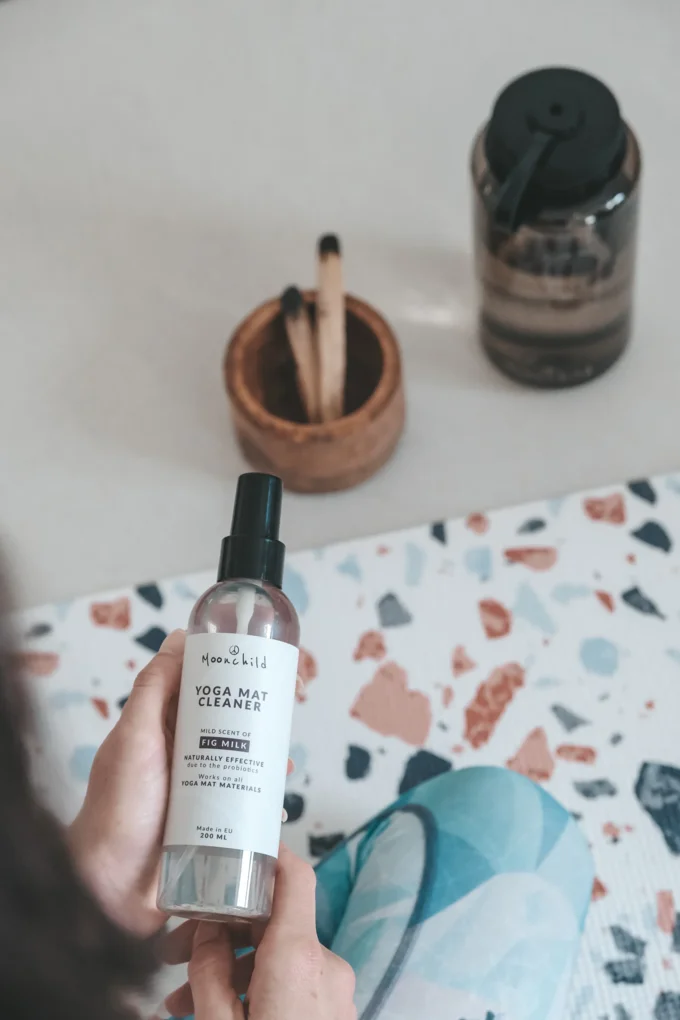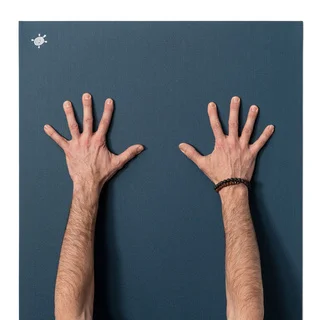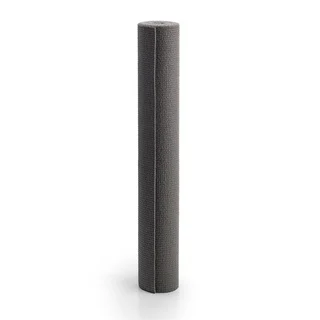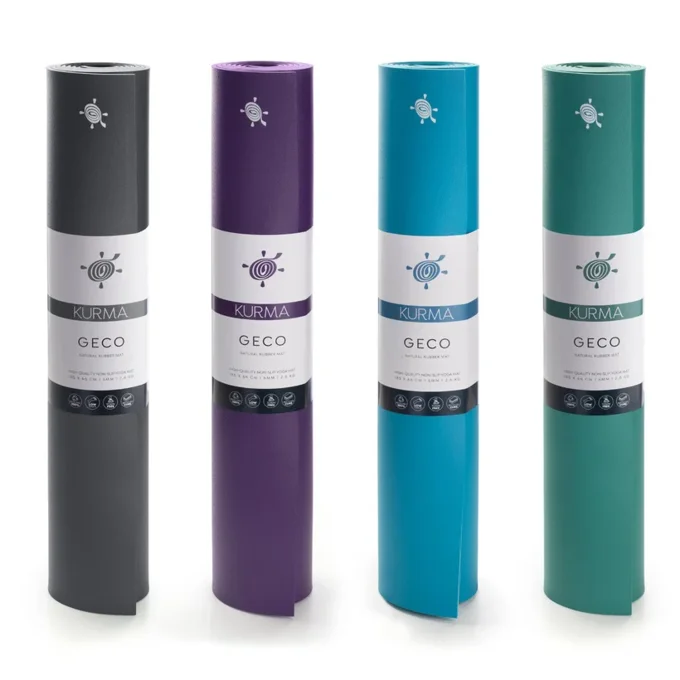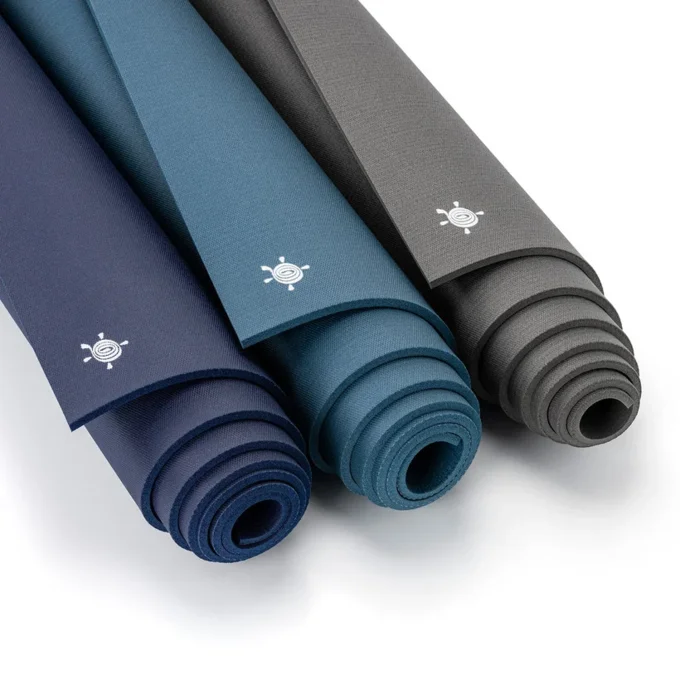
How to take care of a clean and fresh yoga mat?
How to take care of a clean and fresh yoga mat
A yoga mat is not just a surface where you perform your exercises. It’s also the space where you connect with your physical and spiritual energy. To make your practice as enjoyable and safe as possible, it’s essential to keep your yoga mat clean and fresh. A clean yoga mat doesn’t only look better, but it also ensures better hygiene, prolongs the mat's lifespan, and enhances your overall practice experience. Here are some tips on how to take care of your yoga mat and keep it in excellent condition.
Why is cleaning your yoga mat important?
-
Prevention of bacteria and odors
Each time you practice yoga, your mat comes in contact with your skin, sweat, and dirt. If it’s not cleaned regularly, it can become a breeding ground for bacteria, fungi, and other microorganisms. This can lead to unpleasant odors, skin irritations, or even infections. By cleaning your mat regularly, you ensure your practice space remains clean and safe. -
Prolonging the mat’s lifespan
With each use, dirt, sweat, and natural oils from your skin build up on the mat. If left unchecked, these substances can deteriorate the material of the mat, causing it to wear out more quickly. Regular cleaning and maintenance are key to extending the lifespan of your mat. -
Improved grip and comfort
Mats covered in dirt, sweat, or oils can become slippery, reducing grip and stability during your practice. This can increase the risk of injury. A clean mat will provide better traction and make your practice more comfortable.
How often should you clean your yoga mat?
The frequency of cleaning depends on how often you practice, the intensity of your workouts, and the material of your mat. If you're a regular user, it’s recommended to clean your mat thoroughly at least once a month, while a quick clean after each session is recommended for hygiene purposes.
When should you do a deep clean?
- When there is visible dirt or stains.
- When your mat starts to smell.
- When the surface becomes sticky or slippery.
How to clean your yoga mat?
There are several ways to clean your yoga mat, but it's best to stick to gentle yet effective methods so as not to damage the material.
Quick clean after practice
For a quick clean, simply wipe down the surface of the mat with a damp cloth to remove sweat, dirt, and dust. You can also use a mild, organic detergent if you wish to eliminate odors. This is the easiest way to keep your mat clean after each practice without needing a deep clean.
Deep clean once a month
For a thorough clean, you can use a mixture of warm water and mild soap or detergent. Simply rinse the mat, but be careful not to submerge it completely in water. Rinse it thoroughly to remove any soap residue. Allow it to dry completely in a well-ventilated area, away from direct sunlight, to prevent material damage.
How to dry and store your yoga mat?
After cleaning, it’s important to dry your mat properly. Never put it in the dryer, as this can damage the material. Hang it up or lay it flat on a surface to air-dry. Make sure it's completely dry before rolling it up and storing it, as a damp mat can develop mold and unpleasant odors.
Always store your yoga mat in a cool, dry place, away from direct sunlight. Never fold it, as this can cause damage and bending of the mat. Instead, roll it up to maintain its shape and structure.
Which materials are best for cleaning yoga mats?
Although many yoga mats are made from different materials, the most common materials are EVA, TPE, rubber, jute, and cotton. Each material requires different cleaning techniques:
- Rubber Mats are very durable but should not be cleaned with harsh chemicals. Only use mild detergent and cold water.
- TPE Mats (Thermoplastic Elastomer) are easier to clean and more eco-friendly, but they should also be kept away from excessive amounts of water.
- Natural Material Mats (like Jute or Cotton) should be hand-washed with cold water and mild detergent, as they are more sensitive to high temperatures.
Specialized instructions for using and caring for yoga mats
For those who have purchased special yoga mats, such as Spezial, Geco, and Core, it’s important to follow specific care instructions to extend their lifespan and maintain excellent grip.
Care instructions for Spezial yoga mat
- Storage: After practice, you can either roll or fold the mat for convenient storage.
- Helpful Tip: The surface texture of your Spezial mat improves with use. Before the first use, wash it in the washing machine with a small amount of mild eco-friendly detergent to remove any manufacturing residues and improve grip.
- Cleaning:
- After each practice, quickly clean the surface with a damp cloth and mild eco-friendly detergent or disinfecting spray.
- For deep cleaning, wash it in the washing machine at 30°C, but avoid spinning or drying in a dryer. Before storing, hang it or lay it flat on a surface to dry completely.
Care instructions for Geco yoga mat
- Helpful tip: Before first use, it’s recommended to let the mat air out overnight to remove any rubber smell. Wash your hands before use to avoid oils or creams that can cause slipping.
- Storage: Always roll the mat with the logo-facing out to prevent edge curling.
- Cleaning:
- For quick cleaning after each session, simply wipe down the surface with a damp cloth.
- Occasionally use a mild organic detergent for a thorough clean, but avoid soaking the mat completely.
Care instructions for Core yoga mat
- Storage: Roll the mat with the textured top surface facing out to avoid edge curling.
- Cleaning:
- Simply wipe the surface with a damp cloth and mild organic detergent or disinfecting spray.
- Never machine wash it, as this can cause the mat to wrinkle or bend.
Keeping your yoga mat clean and fresh is not only essential for hygiene but also for safety and comfort during your practice. By regularly cleaning and properly maintaining it, you’ll extend its lifespan and ensure a better experience on your yoga journey. Follow the care instructions for your specific yoga mat and enjoy your practice without worries.


